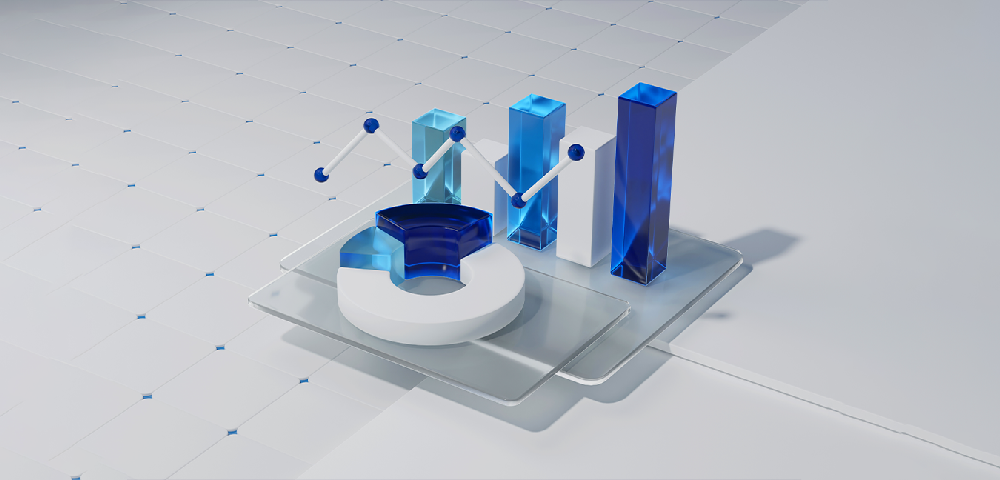The digital landscape is undergoing a fundamental shift. While platforms have long been at the heart of business transformation, the convergence of Web3, edge computing, and digital twins is unlocking unprecedented opportunities. Companies that embrace these technologies together, rather than in isolation, will redefine competition, customer experience, and operational efficiency in the coming years.
This article explores how the fusion of these three trends is shaping the next era of digital platforms, offering a decentralized, real-time, and hyper-realistic approach to business transformation.
Web3: Decentralizing Digital Trust
Web3 is ushering in a new digital economy built on blockchain, decentralized applications (dApps), and tokenized assets. Unlike traditional platforms that rely on central authorities, Web3 enables peer-to-peer interactions, reducing intermediaries and empowering users with greater control over data and digital ownership.
For businesses, this means a fundamental shift in platform economics. Consider how industries like finance, gaming, and supply chain management are leveraging Web3 to create new value:
- Decentralized Finance (DeFi): Companies like Aave and Uniswap are disrupting traditional banking by offering decentralized lending and trading services.
- Tokenized Ownership: Digital assets, from NFTs to blockchain-verified real estate transactions, are reshaping how ownership is defined.
- Smart Contracts: Automating complex agreements without intermediaries is revolutionizing industries from legal services to global trade.
However, the success of Web3 hinges on scalability and real-time processing, which is where edge computing becomes crucial.
Edge Computing: The Power of Real-Time Processing
As businesses shift to more decentralized and data-intensive models, traditional cloud computing alone cannot meet the demands of real-time processing, low latency, and bandwidth efficiency. This is where edge computing steps in—moving computation closer to where data is generated, whether in IoT devices, autonomous vehicles, or smart factories.
The rise of edge computing is particularly transformative for platform-based business models in:
- Retail: Personalized, in-store customer experiences powered by AI-driven recommendations processed on the edge.
- Healthcare: Remote patient monitoring and AI-assisted diagnostics, reducing the reliance on centralized data centers.
- Manufacturing: Predictive maintenance in smart factories, enabling real-time adjustments to production lines.
Yet, to truly optimize operations in a digital-first world, platforms must go beyond processing power and create virtual representations of physical assets—enter digital twins.
Digital Twins: The Virtual Mirror of the Physical World
Digital twins—real-time, data-driven simulations of physical objects, systems, or processes—are set to revolutionize platform-based businesses. With real-time data capture, AI modeling, and predictive analytics, digital twins bridge the physical and digital realms, enabling companies to:
- Enhance Operational Efficiency: Predict system failures before they happen in sectors like energy, aviation, and logistics.
- Optimize Customer Experience: Retailers and real estate developers are creating virtual experiences where customers can interact with products before purchase.
- Accelerate Innovation: Automotive and aerospace companies simulate new product designs, reducing development time and costs.
The Power of Convergence: A New Digital Playbook
When Web3, edge computing, and digital twins are integrated, they create a self-sustaining, intelligent platform ecosystem. Here’s how they complement each other:
- Web3 decentralizes data control, ensuring transparency and security in digital transactions.
- Edge computing processes this decentralized data in real-time, reducing latency and optimizing performance.
- Digital twins leverage this real-time data to simulate, analyze, and predict outcomes, unlocking new levels of efficiency.
Strategic Implications: What Businesses Must Do Now
To stay competitive in this new platform era, companies must:
- Adopt a Decentralized Mindset: Traditional platform models based on central control will become obsolete. Companies need to explore how tokenization, blockchain, and smart contracts can redefine their business models.
- Invest in Edge-Enabled Infrastructure: Moving data processing closer to users and devices will become a strategic necessity, particularly in industries that require low latency and instant decision-making.
- Leverage Digital Twins for Simulation and Optimization: Businesses should integrate digital twin technology to enhance operational resilience, improve forecasting, and reduce costs.
- Prepare for Cross-Industry Collaboration: The convergence of Web3, edge, and digital twins will lead to new ecosystem partnerships, where businesses co-create value instead of operating in silos.
The next generation of digital platforms will not be defined by centralized control, cloud dependence, or static business models. Instead, they will be decentralized, real-time, and dynamically evolving, driven by the convergence of Web3, edge computing, and digital twins.
Companies that embrace this transformation early will not only optimize operations but also unlock entirely new revenue streams, shaping the competitive landscape of the digital economy. The time to act is now.






